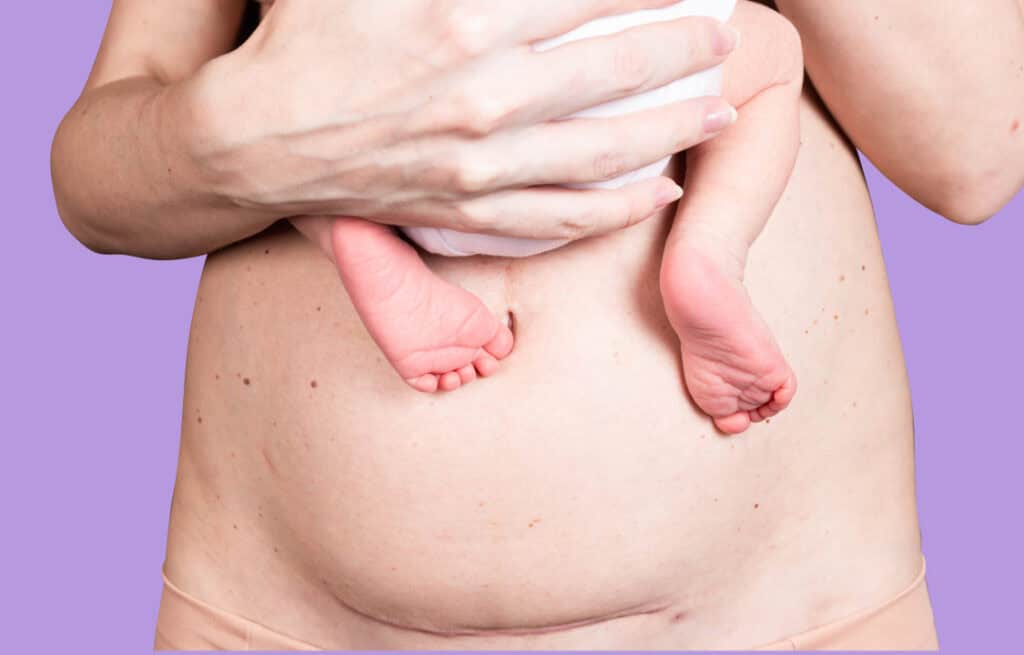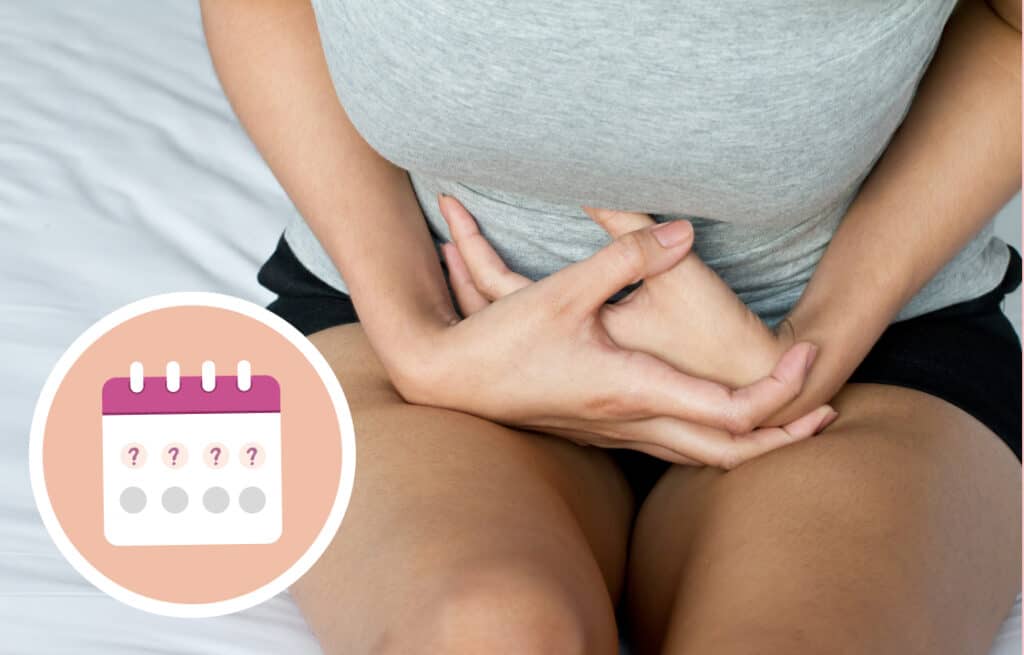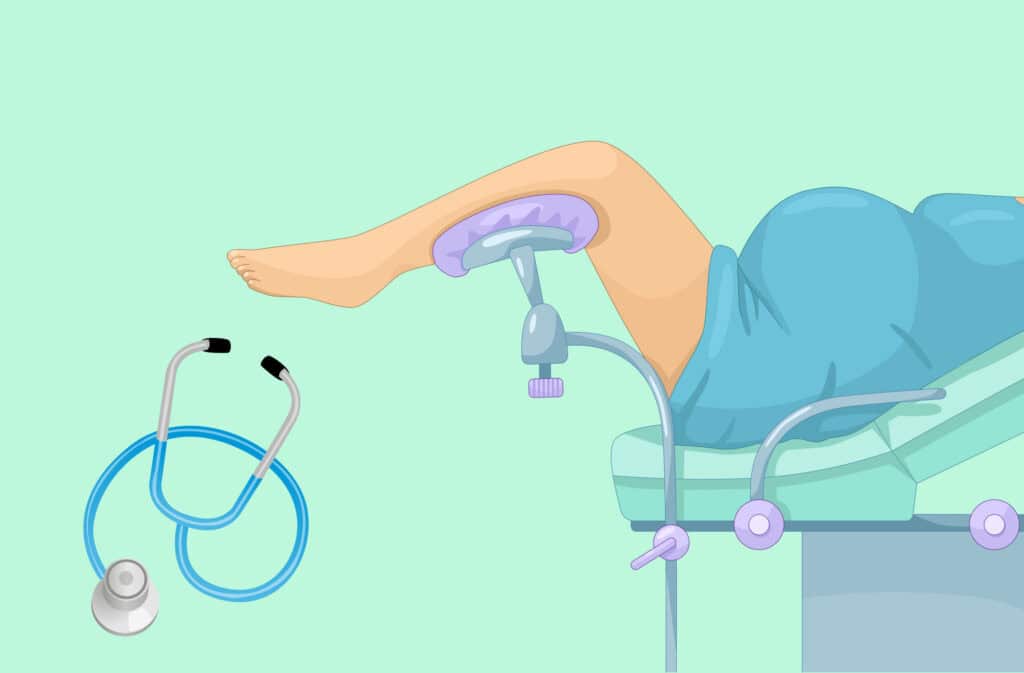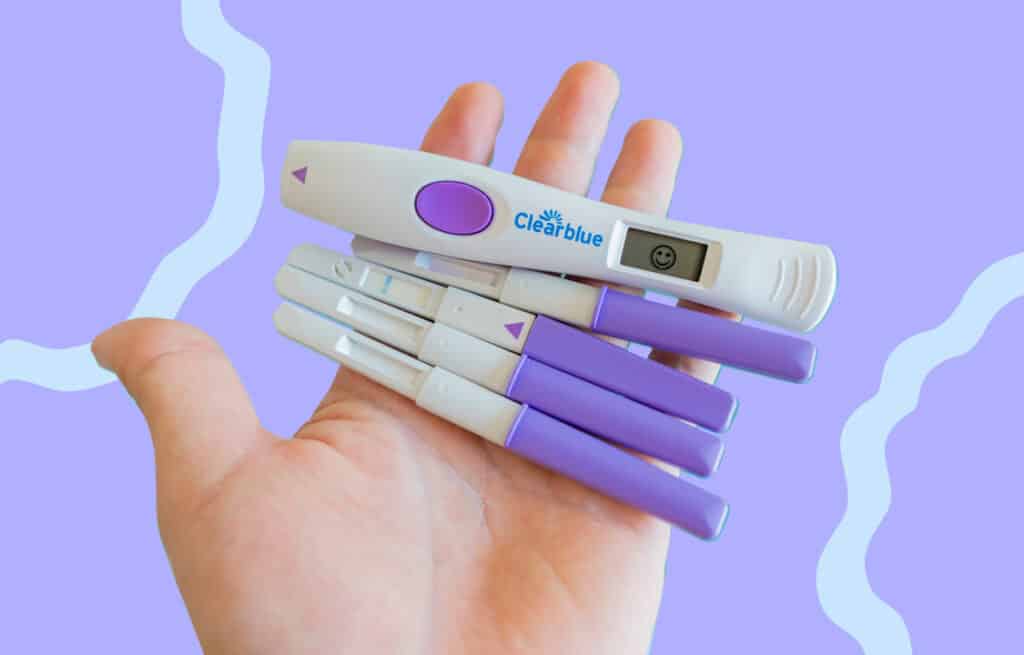Femia > Health Library > Being a mom > Recovering from birth > How to lose postpartum fat the healthy way: 8 proven tips
How to lose postpartum fat the healthy way: 8 proven tips

- Updated Feb 11, 2025
- Published
CRAFTED BY HUMAN
Crafted by human At Femia, we provide accurate and up-to-date information at every stage of your journey, from trying to conceive, pregnancy and postnatal support. All content is created by a real person based on in-depth research and own professional experience. Femia ensures that you will receive expert advice, strict accuracy and a personalized approach from our authors/medical experts. Learn more about our editorial policy.
FACT CHECKED
Fact checked At Femia Health, we maintain the highest standards of editorial excellence in delivering content focused on helping you conceive, guiding you through pregnancy, and supporting you postpartum. Explore our content review principles to learn how we ensure the accuracy and quality of our health and lifestyle tips for every stage of your journey.
The best way to lose postpartum belly fat is to take it slow. After nine months of stretching, it will take time for your body to return to its pre-pregnancy shape. Making healthy food choices and ensuring you exercise daily will help you to lose post-pregnancy belly fat. However, sleep, breastfeeding, and hormones can also affect postpartum weight management, so you must cut yourself some slack.
Weight gain during pregnancy is expected. During pregnancy, your body stores fat to prepare for breast milk production after birth. Many women find this fat hanging around after birth, especially on their belly. While you may not love your postpartum belly, maybe it’s time to show appreciation for your life-growing body.
Your abdominal muscles have had quite a shock over the past nine months, and it will take time to tone them back to their former glory. Set realistic and sustainable goals for your weight loss journey, and try not to waste your maternity leave worrying about how to get rid of mommy belly. Instead, enjoy this time with your perfect new baby. This guide will cover the basics of postpartum weight management and how to lose postpartum fat.
Femia offers personalized insights and helps you stay in control
Why does postpartum belly fat happen?
There are a few reasons why postpartum belly fat happens, including:
- Pregnancy weight gain. Your body stores fat to prepare for breast milk production.
- Stretched abdominal muscles. Your abdominal muscles are two bands of muscle located between your ribs and pelvis. During pregnancy, these muscles stretch to accommodate your growing bump, and it takes time for these muscles to regain their previous strength and tone.
- Hormonal changes. Hormones play a crucial role during pregnancy. These hormonal changes can impact your body and make weight loss more difficult. It takes time for hormones, such as estrogen and progesterone, to settle down after birth. Luckily, the healthy lifestyle changes you make to manage your weight will likely also help to redress any postpartum hormonal imbalances.
👉Find out more: Low testosterone in women: Symptoms, causes, and how to treat it
How long does it take to lose postpartum belly fat?
There is no one-size-fits-all approach to postpartum weight loss and how to shrink postpartum belly fat. The general timeline for how long it takes to lose postpartum belly fat varies between people and may be affected by:
- Age. Younger moms may find it easier to shed the baby weight. When you’re younger, you tend to have a faster metabolism, making weight loss easier.
- Pre-pregnancy fitness. If you were a gym bunny before getting pregnant and stayed active through pregnancy, you may find it easier to shed the pounds.
- How you gave birth. A C-section is a major surgery, and it can take time for your body to heal afterward. While the wait can be frustrating, you must give yourself time to recover before exercising again.
- Whether you’re breastfeeding. A 2014 study published in Preventative Medicine found that women who exclusively breastfed for at least three months were slightly more likely to be back to their pre-pregnancy weight (or lower) within 12 months.
- Diet. The most critical factor in weight loss is diet. If you eat well, you’re likely to lose weight faster than a person eating junk food and high-sugar foods. That doesn’t mean you have to completely ban yourself from eating cake or takeaways; it just means you need to eat these foods in moderation.
- Your exercise regime. Exercise can help your body tone up after pregnancy. In fact, you should consider gentle exercise a non-negotiable of your postpartum essentials. You have to be careful which exercises you do during the postpartum period, which is why it’s worth attending a postnatal exercise class with a qualified trainer.
Diet tips for postpartum belly fat
Though there are many people claiming different ways to lose postpartum belly, diet is the biggest factor in weight loss, so don’t underestimate the change you can achieve by simply switching up your diet. A 2015 study published in Obesity Reviews found that diet and physical activity combined were more effective for weight loss than physical activity alone.
If you’re wondering how to get rid of belly fat after pregnancy, the following diet tips will explain how to lose your pregnancy belly:
1. Focus on healthy foods
Whole grains (like quinoa, oats, brown rice, and barley), fresh fruits and vegetables, lean proteins (fish, chicken breast, turkey, tofu, and greek yogurt), and healthy fats should comprise the bulk of your diet. Experiment with different recipes and food combinations to find nourishing foods that taste great.
2. Limit unhealthy foods
It’s not a good idea to villainize foods, but it’s a fact that certain foods are bad for your body. High-sugar, processed foods can make it more challenging to lose weight. Include these in your diet as ”sometimes foods,” to be eaten occasionally, rather than everyday foods.
3. Stay hydrated
Hydration is crucial for health and weight management. Women should aim to drink between 1.5 and 2.5 liters of water daily, and you can increase this by up to another liter if you’re breastfeeding. If you’re breastfeeding, you’ve probably noticed how thirsty you feel during the day. Keeping a bottle of cold water nearby can help you stay hydrated.
👉Find out more: Best postnatal vitamins for recovery and breastfeeding
Exercises to help lose postpartum belly fat
Though you can start walking again days after birth, you’ll want to start small, and gradually build up the amount of gentle exercise you do. When it comes to working out, you should wait until you get the all-clear from your doctor (usually around the six-week mark). Here are some exercise tips for the postpartum period:
1. Choose low-impact exercises
Walking is a great place to start. Take a gentle stroll with your baby each day, and look into local postnatal yoga or pilates classes. These classes are usually designed for babies to safely attend, so you can exercise with your baby in tow. As a bonus, you’ll also get to meet other new moms in your local area.
2. Choose postnatal exercise classes
Your body has changed a lot over the past year. Your abdominal muscles will likely need gentle strengthening, and you’ll need to exercise carefully to ensure good pelvic floor recovery. For this reason, it’s worth signing up for a postnatal exercise class led by a qualified instructor who understands the unique needs of the postnatal body and how to aid recovery through exercise.
Femia offers personalized insights and helps you stay in control
3. Exercise as a family
A 2021 study published in the Journal of Clinical Medicine found that many new moms are motivated by wanting to model healthy lifestyle choices for their babies. Exercising as a family can motivate you to consistently spend time exercising each week. Including a family walk as part of your daily (or weekly, if time is limited) routine is an enjoyable way to exercise as a family.
4. Listen to your body
Don’t overdo it when you return to fitness. It’s crucial to take it one step at a time. Listen to your body, and gradually increase your workout intensity as you feel able to. If you’ve overdone it, take it easier in your next workout. Don’t put pressure on yourself—it takes time to return to your pre-pregnancy fitness. Your body has achieved something miraculous, and it deserves time to recover properly.
5. Do your pelvic floor exercises
You can start pelvic floor exercises as soon as you feel able to after birth. Pregnancy and birth put a lot of pressure on your pelvic floor, and it’s vital you do kegels to improve pelvic floor strength after pregnancy. If you had a forceps- or vacuum-assisted birth, speak to your doctor before resuming your pelvic floor exercises.
Other lifestyle changes that support fat loss
Other postnatal factors may affect how quickly you can lose your postpartum belly, including:
Sleep
Poor sleep can slow down your metabolism and make it harder to lose weight. However, you have very little control over how much sleep you get when you have a baby, so knowing this is unlikely to be helpful. However, it might be reassuring to know that it’ll be easier to lose weight once you’re getting a decent night’s sleep (which will happen one day, promise!).
Stress
Stress affects cortisol levels in the body, and increased cortisol levels can lead to more belly fat, making it impossible to lose your postpartum belly. While we think of stress as being emotional, there are actually lots of different types of stress. There is the emotional stress of the postpartum period and finding your feet as a new parent, and there is the oxidative stress caused by poor diet and unhealthy lifestyle choices.
When to seek professional help
If you are concerned about your pregnancy weight gain, speak to your healthcare provider for support. They may be able to refer you to a postnatal-certified fitness instructor for personalized advice. The postpartum period is a great time to make changes to improve your health, so don’t be afraid to reach out for support.
Diastasis recti
Diastasis recti is a common condition of pregnancy whereby the abdominal muscles separate. These muscles usually come back together by 4–8 weeks after birth; however, in some cases, it can take longer. If you have diastasis recti, a physical therapist can advise you on exercises to gently encourage the muscles back into their proper positions. Speak to your doctor for a diagnosis and referral for treatment.
Questions from the Femia community
Can I safely lose postpartum belly fat while breastfeeding?
Yes, you can lose weight while breastfeeding. Exclusive breastfeeding is thought to burn around 500 calories daily. However, you should avoid extreme dieting and calorie restriction, as these could impact your milk supply.
Does wearing a belly band help shrink postpartum belly fat?
No, wearing a belly band won’t help you lose weight. However, it will support your core and improve posture, which is vital during the postpartum period, when your abdominal muscles may be struggling.
How soon can I start exercising after giving birth?
Most people can start gentle exercise, like walking, within days of birth. However, this will depend on how you feel. It’s crucial to listen to your body and not overdo things. Wait for medical clearance from your doctor before starting exercise workouts again.
Is it harder to lose belly fat after a C-section?
The recovery process after a c-section can take a little longer than for a vaginal birth. However, gentle walks are still recommended to aid recovery, and gentle exercise combined with healthy eating can help you tackle your postpartum belly fat.
Are there vitamins or supplements to help lose postpartum belly fat?
No supplements specifically target belly fat, but a balanced diet with sufficient nutrients supports overall recovery.
The bottom line
Your body has gone through some big changes to support your pregnancy, and you should celebrate those achievements. Try not to be your body’s harshest critic and obsess over how to lose belly fat after pregnancy. While you might not love all the changes in your body, they are part of the process that brought you your baby. Patience and self-compassion are key when it comes to your postnatal body.
Be sure to exercise under the guidance of a postpartum-certified fitness instructor who understands how to care for your postpartum body. If you think you might have diastasis recti, reach out to your doctor for advice.
You won’t shed the baby weight overnight. However, with patience and consistency, you’ll lose your postpartum belly and get your body back. Focus on eating a healthy diet and ensuring regular movement. Avoid fad diets and extreme calorie restrictions, which could be detrimental to your health. Instead, focus on making long-term changes to improve your health.
References
- Chen B, Zhao X, Hu Y. Rehabilitations for maternal diastasis recti abdominis: An update on therapeutic directions. Heliyon. 2023 Oct 12;9(10):e20956. doi: 10.1016/j.heliyon.2023.e20956. PMID: 37867827; PMCID: PMC10589864. https://pubmed.ncbi.nlm.nih.gov/37867827/.
- Jarlenski MP, Bennett WL, Bleich SN, Barry CL, Stuart EA. Effects of breastfeeding on postpartum weight loss among U.S. women. Prev Med. 2014 Dec;69:146-50. doi: 10.1016/j.ypmed.2014.09.018. Epub 2014 Oct 5. PMID: 25284261; PMCID: PMC4312189. https://pmc.ncbi.nlm.nih.gov/articles/PMC4312189/.
- Lim S, O’Reilly S, Behrens H, Skinner T, Ellis I, Dunbar JA. Effective strategies for weight loss in post-partum women: a systematic review and meta-analysis. Obes Rev. 2015 Nov;16(11):972-87. doi: 10.1111/obr.12312. Epub 2015 Aug 27. PMID: 26313354. https://pubmed.ncbi.nlm.nih.gov/26313354/.
- Makama M, Skouteris H, Moran LJ, Lim S. Reducing Postpartum Weight Retention: A Review of the Implementation Challenges of Postpartum Lifestyle Interventions. J Clin Med. 2021 Apr 27;10(9):1891. doi: 10.3390/jcm10091891. PMID: 33925502; PMCID: PMC8123857. https://pmc.ncbi.nlm.nih.gov/articles/PMC8123857/.

Ovulation pain, pregnancy or even stress can be one of the reasons for cramps but no period. Learn about all the possible causes and ways to manage these cramps.

Learn about cervical checks during pregnancy, including what to expect, when they typically happen, and how they can help monitor your progress.

Learn what ovulation means, how it happens, signs ovulation is over, and how to track ovulation for pregnancy planning.

